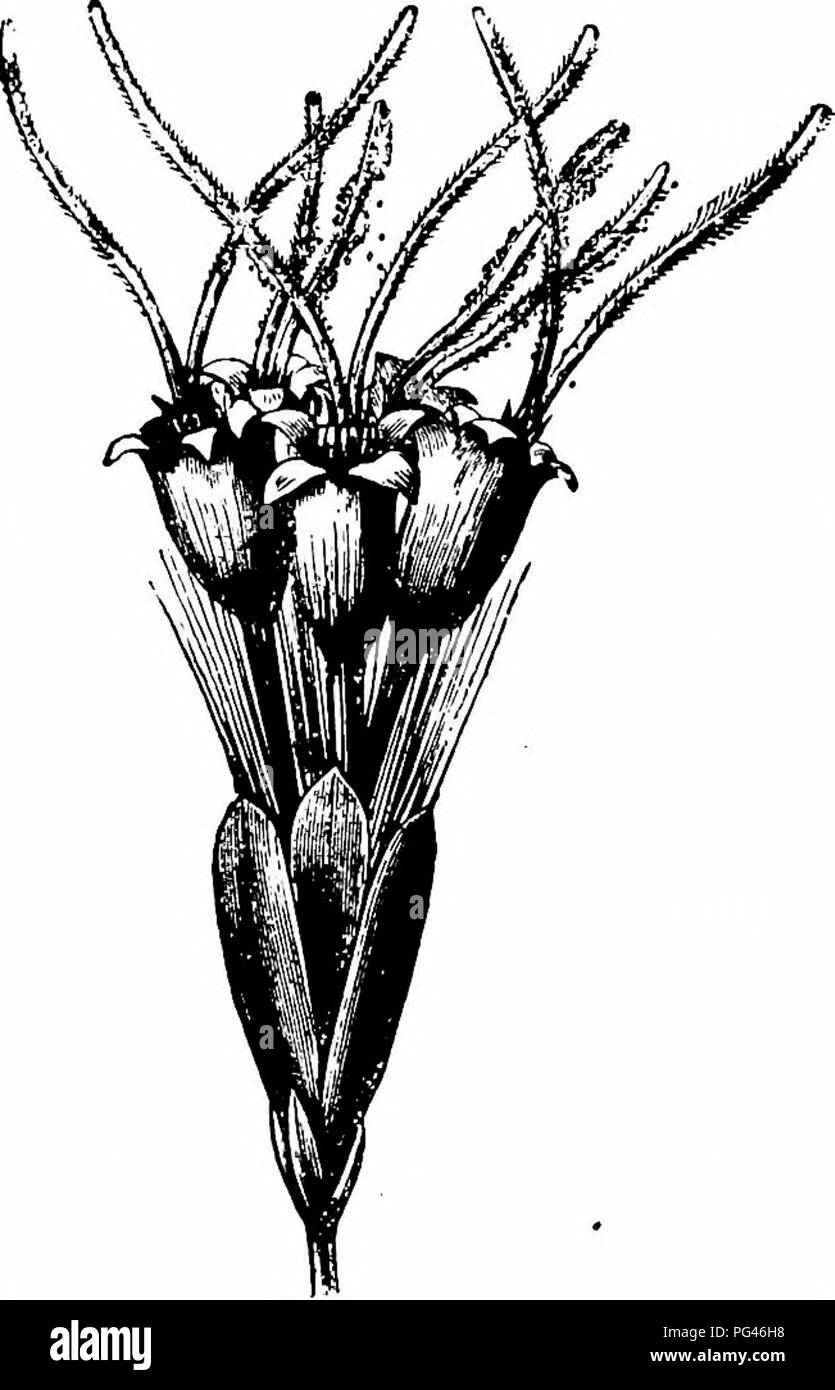. Handbook of flower pollination : based upon Hermann Mu?ller's work 'The fertilisation of flowers by insects' . Fertilization of plants. 572 ANCIOSPERMAE—DICOTYLEDONES corymbose inflorescences, these are very conspicuous, especially as the greatly protruding stylar branches are white, while the margins of the involucral bracts are reddish in colour. The corolla-tube is 2^ mm. long, ending in a bell scarcely 2 mm. in length, from which the stylar branches project for about 5 mm. In the first stage of anthesis the lowest part of the stylar branches (beset with stigmatic papillae) remains in the

Image details
Contributor:
Central Historic Books / Alamy Stock PhotoImage ID:
PG46H8File size:
7.1 MB (250.5 KB Compressed download)Releases:
Model - no | Property - noDo I need a release?Dimensions:
1267 x 1971 px | 21.5 x 33.4 cm | 8.4 x 13.1 inches | 150dpiMore information:
This image is a public domain image, which means either that copyright has expired in the image or the copyright holder has waived their copyright. Alamy charges you a fee for access to the high resolution copy of the image.
This image could have imperfections as it’s either historical or reportage.
. Handbook of flower pollination : based upon Hermann Mu?ller's work 'The fertilisation of flowers by insects' . Fertilization of plants. 572 ANCIOSPERMAE—DICOTYLEDONES corymbose inflorescences, these are very conspicuous, especially as the greatly protruding stylar branches are white, while the margins of the involucral bracts are reddish in colour. The corolla-tube is 2^ mm. long, ending in a bell scarcely 2 mm. in length, from which the stylar branches project for about 5 mm. In the first stage of anthesis the lowest part of the stylar branches (beset with stigmatic papillae) remains in the corolla-tube, while their upper three-fourths (covered with sweeping-hairs) project freely, and diverge so widely that insect visitors touch them, and rub off the pollen-grains clinging to the sweeping-hairs. In the second stage of anthesis the lower parts of the stylar branches project from the bell, so that insects probing for nectar must come into contact with the stigmatic papillae. Wamstorf adds that the anther-cylinders do not project out of the florets, and that the sweeping-hairs are thick, bluntly conical papillae, sometimes two-celled, delicately striated, and projecting horizontally. The pollen- grains are white, roundish to ellipsoidal, spinose, on an average 25 /x in diameter. If insect visitors are sufficiently numerous to remove the pollen from the sweeping-hairs before the stigmas project, cross-pollination is assured. If, however, pollen still clings to the sweep- ing-hairs when the lower parts of the stylar branches protrude, self-pollination is equally possible as the result of insect- visits. Automatic self-pollination cannot lake place in the total absence of visitors, but geitonogamy undoubtedly may, for the stylar branches spread out so far that they occasionally touch the stigmas of adjacent florets. Kerner ('Nat. Hist. PI., ' Eng. Ed. i, II, p. 319) calls particular attention to this possibility (Fig. 191). Visitors.— Of these Lepidoptera are the ch